Scoria is a highly vesiculated lava or tephra1. It is usually dark-colored and has a mafic composition. It is difficult to say for sure whether it is a rock type or not. It is tempting to say no. Scoriaceous rocks are simply dark-colored volcanic rocks with lots of variously sized and usually smooth-sided holes (vesicules) in it. It seems that “scoriaceous” simply refers to their porous texture.
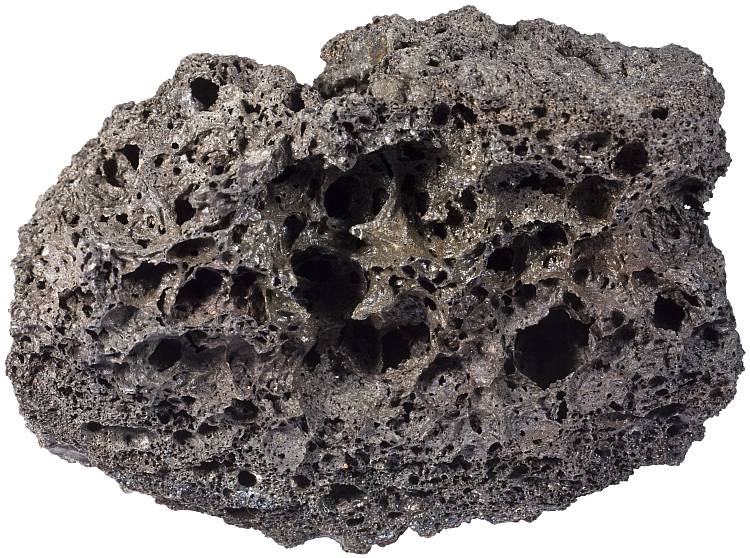
A sample from a cinder cone in Tenerife, Canary Islands. Width of sample 7 cm.
However, the same is true with pumice. Pumice is usually felsic, but no strict chemical definition exists. Pumice can be rhyolitic, dacitic, phonolitic, etc. It just needs to be very porous and light-weight lava froth and yet it is still considered to be a rock type.
These rocks have several similarities. They are both volcanic rocks (often pyroclastic) and they contain vesicules. Vesicules in pumice are usually smaller and more irregularly shaped. Pumice is a very lightweight material that usually floats in water. Scoria is lightweight also, but it sinks in water. Its vesicles can be much larger than vesicles in pumice are. It is often glassy just as pumice. Fresh rock may be distinctly pitch black and shiny. Older material is duller and brown or even reddish due to oxidized iron. It contains much more iron (which gives black color to fresh rock) than average pumice which contains more alkali metals (potassium, sodium).
Vesicules within scoria (and in pumice also) form when volcanic gases are released from magma. They are released because of decreasing pressure as magma moves upward (solubility of gases in liquids is dependent on pressure — higher pressure means better solubility). Mafic magma is less viscous than felsic magma. That’s why gas bubbles can move more freely and join each other and form larger vesicules. Bubbles that form in felsic magma can not move as well. Hence, there are much more pores in pumice than in scoria and they are smaller.
Both lava flows (especially their upper part) and pyroclastic fragments can be scoriaceous, but it is usually the latter that the term “scoria” is associated with. It even seems that sometimes the terms “lapilli” and “scoria” are used interchangeably. Small usually monogenetic volcanic cones are known as scoria (or cinder) cones. It is easy to make an obvious conclusion that this fragmental material these cones are mostly made of is scoria. This conclusion is not entirely mistaken. It is scoria indeed, but not because it is fragmental. It is scoria because it is vesicular.
Scoria as a pyroclastic material (tephra) usually has a size of lapilli (2-64 mm) which is larger than volcanic ash and smaller than volcanic blocks and bombs.
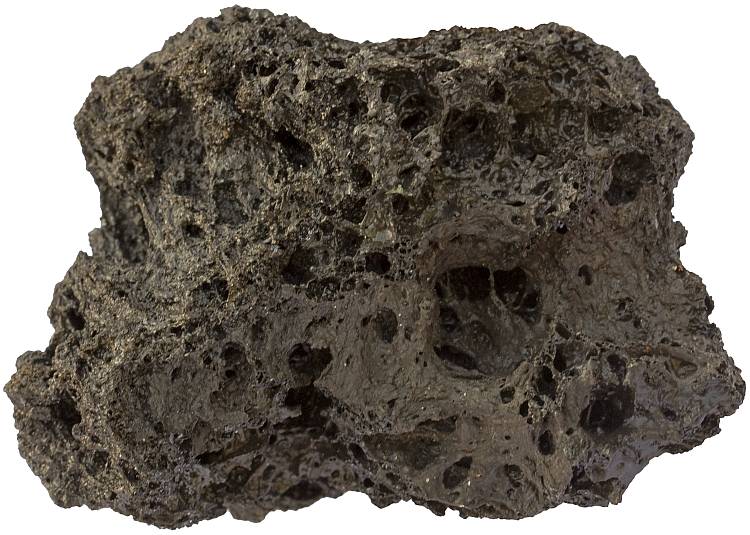
A sample of scoria from Etna, Sicily.
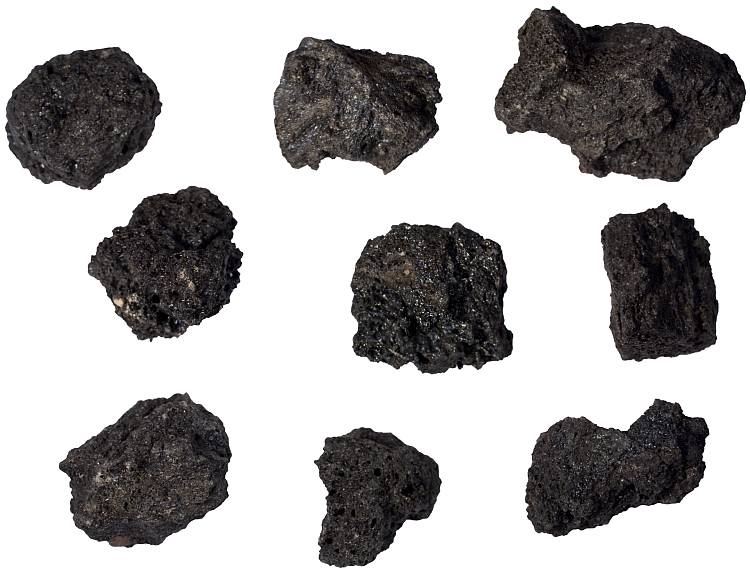
Small scoriaceous lapilli from Cumbre Vieja, La Palma, Canary Islands. The samples from Tenerife and Etna (above) look like classic scoria, but these small lapilli here are actually more typical. They are not very vesicular and vesicules are not large, but this is how scoriaceous lapilli usually look like. The two samples above are not rare or unusual, but still they are specifically chosen in the field out of many candidates to demonstrate the very vesicular nature of “true scoria”. Width of view 6 cm.
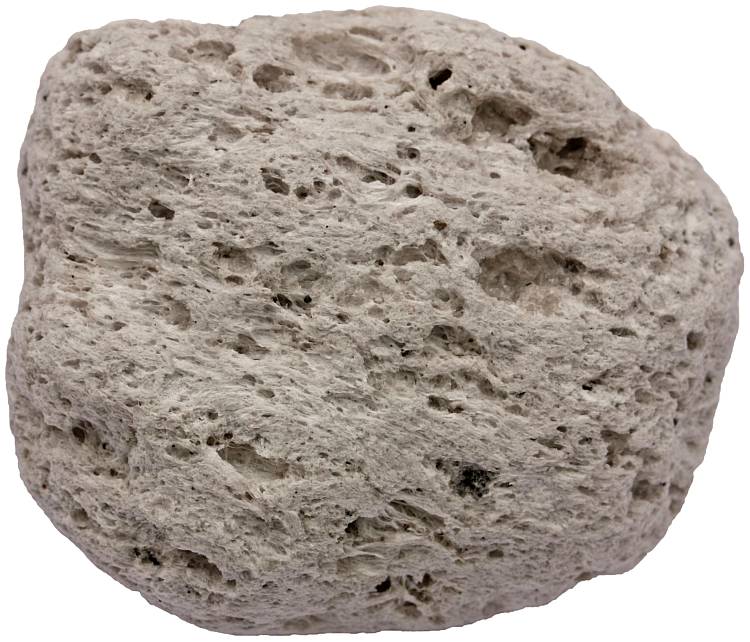
Pumice is in many ways similar rock, but it is generally lighter in both weight and color. Santorini, Greece. Width of view 4 cm.
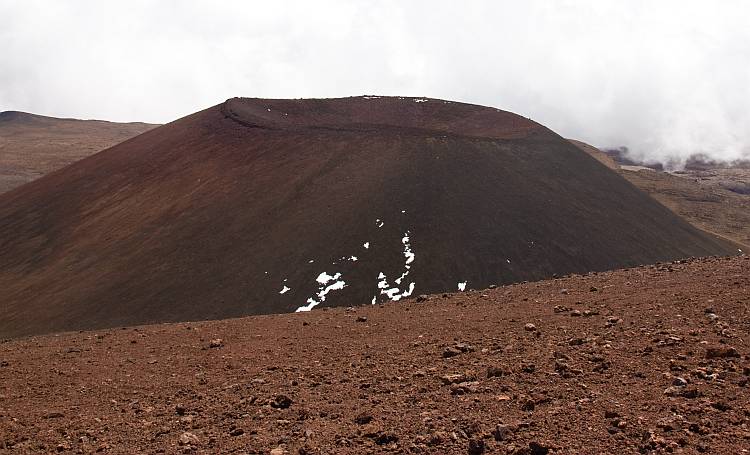
Scoria cone on top of the Hawaii Island more than 4000 meters above sea level. Scoria cone is a small monogenetic volcano that is usually situated on the flanks of a bigger volcano.
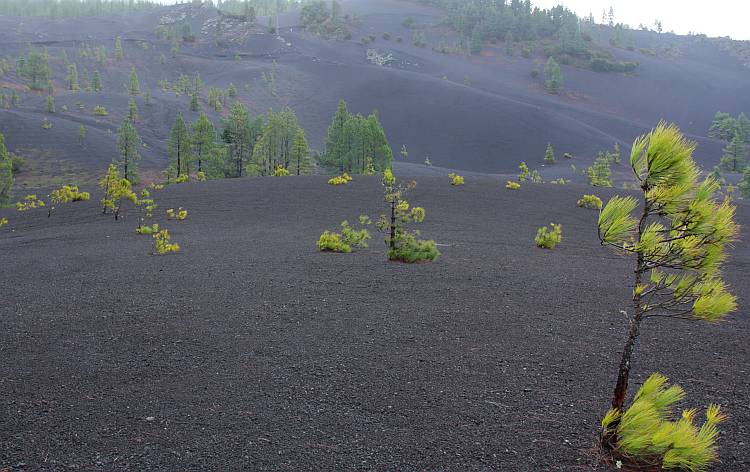
Field of scoriaceous lapilli in La Palma.
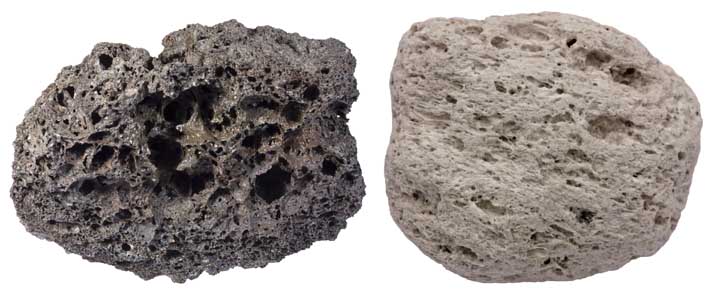
Pieces of scoria (from Tenerife) and pumice (from Santorini) on the same picture.
References
1. Le Maitre, R. W. (2005). Igneous Rocks: A Classification and Glossary of Terms: Recommendations of the International Union of Geological Sciences Subcommission on the Systematics of Igneous Rocks, 2nd Edition. Cambridge University Press.
In our classes, we treated “scoria” as a textural term- thus an adequate formal description would include at the very least a rock type: “basalt scoria,” for example, or “scoriaceous basalt.” For <50% void space by volume, vesicular was preferred; scoria was applied if the void spaces exceeded 50%. It also applied to only mafic to intermediate compositions, further distinguishing it from pumice. "Pumice" was acceptable as a rock name, because it presumed a rhyolitic composition, and because rocks of that type are much trickier to pin down in terms of chemical composition, with with a thin section and scope.
This is quite similar to my interpretation. 50% vesicularity is a new thing to me. Thanks for your comment.